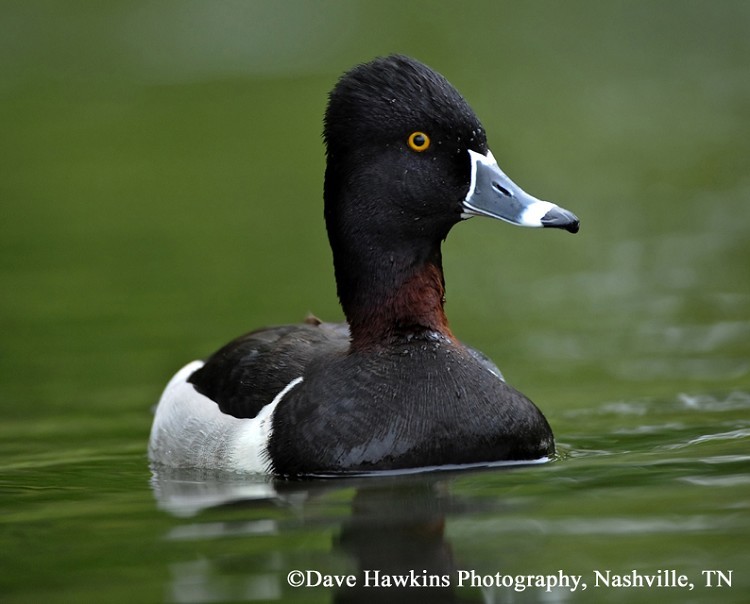Ring-necked Duck, Aythya collaris

Ironically, the ring on the neck of the Ring-necked Duck is not visible in the field. A much better field mark is the ring on the bill.
This duck breeds across central Canada reaching the northern United States. It spends the winter across the southern United States, along both coasts, and southward through Mexico, Central America, and the Caribbean. During the winter they can form large rafts* and are often found in association with Lesser Scaup.
This diving duck is found in Tennessee during the non-breeding season and more likely to be seen on small ponds than other diving ducks.
Description: This medium-sized diving duck has a distinctive white ring on the bluish, black-tipped bill. A short crest gives the head a peaked look. The male has a black head, chest, back and rear end. The sides are gray and there is a vertical white stripe on the shoulder.
The female is overall brown with a white eye-ring that has a white line extending back from the eye.
Length: 17"
Wingspan: 25"
Weight: 1.5 lbs.
Voice: Usually silent.
Similar Species:
- Male Greater and Lesser Scaup have light backs and lack the ring around the bill.
- Female Greater and Lesser Scaup have a white patch at the base of the bill and lack an eye-ring.
- Female Redheads have a rounded head, a paler back, and no eye-ring.
Habitat: In Tennessee, Ring-necked Ducks are found on lakes, ponds, flooded grain fields and forested wetlands. They are found in more shallow portions of lakes than other diving ducks.
Diet: Aquatic plant seeds and tubers, also aquatic invertebrates.
Nesting and reproduction: There are no known nesting records for this species in Tennessee.
Status in Tennessee: The Ring-necked Duck is a fairly common migrant and winter resident in the state, with greater numbers wintering in West and Middle Tennessee. They arrive in early October and most depart by late April.
Dynamic map of Ring-necked Duck eBird observations in Tennessee
Best places to see in Tennessee: Cross Creeks NWR, and other state and federal waterfowl refuges in Tennessee.
Fun Facts:
- The chestnut-colored ring around the neck, giving this duck its name, is only visible when the bird is in the hand. Such subtle characters would have been obvious to the people first describing this species from a dead specimen.
- The oldest known Ring-necked Duck in the wild was 20 years, 5 months old.
Obsolete English Names: black-head, blackhead, broadbill